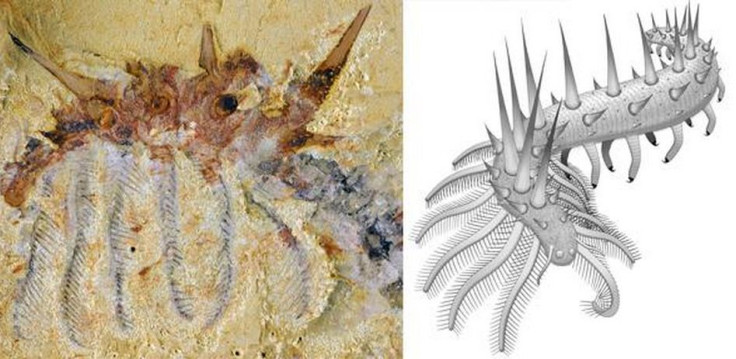Species Of Spiky ‘Super-Armored’ Worm, Which Lived 500 Million Years Ago, Discovered In China

A new species of an ancient spike-covered worm, which lived on Earth about 500 million years ago, has been discovered in China. Scientists said that the creature was one of the first animals on the planet to develop armor for protection.
The creature, named “Collinsium ciliosum,” or “Hairy Collins’ Monster,” used its feather-like front legs to filter nutrients out of seawater. According to scientists, it is also one of the first animals on Earth to use such a specialized mode of feeding. The worm is a distant early ancestor of modern velvet worms that are found primarily in tropical forests around the world, the scientists said in a study, published in the journal PNAS, on Monday.
“Modern velvet worms are all pretty similar in terms of their general body organization and not that exciting in terms of their lifestyle,” Javier Ortega-Hernández, of the University of Cambridge in the U.K. and one of the lead authors of the study, said in a statement. “But during the Cambrian, the distant relatives of velvet worms were stunningly diverse and came in a surprising variety of bizarre shapes and sizes.”
The fossil of Collins’ Monster, which was found in southern China, was remarkably well-preserved, and provided details of the full body organization, including a delicate coat of hair-like structures on the front end. The creature had a soft and squishy body with six pairs of feather-like front legs and nine pairs of rear legs ending in claws, the scientists said.
Scientists also believe that Collins’ Monster used to cling onto sponges or other hard substances by its back claws, while filtering out its food with its feathery front legs. Because of its inactive lifestyle and soft body, the creature is also believed to have developed a defense mechanism, which includes 72 sharp and pointed spikes of different sizes covering its body.
The Chinese Collins’ Monster resembles Hallucigenia, a thumb-sized worm that went extinct over 400 million years ago, the scientists said.
“Both creatures are lobopodians, or legged worms, but the Collins’ Monster sort of looks like Hallucigenia on steroids,” Ortega-Hernández said in the statement. “It had much heavier armor protecting its body, with up to five pointy spines per pair of legs, as opposed to Hallucigenia’s two. Unlike Hallucigenia, the limbs at the front of Collins’ Monster’s body were also covered with fine brushes or bristles that were used for a specialized type of feeding from the water column.”
© Copyright IBTimes 2024. All rights reserved.






















